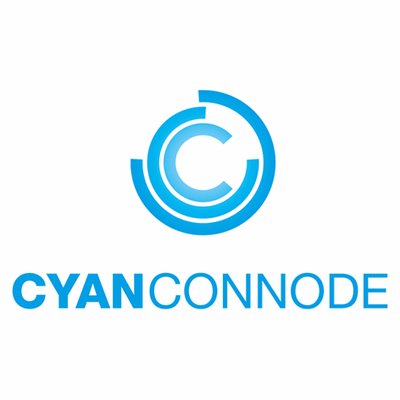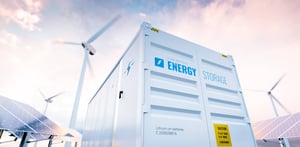CyanConnode Holdings plc (LON:CYAN) is the topic of conversation when Hardman & Co’s Technology Analyst Milan Radia caught up with DirectorsTalk for an exclusive interview.
Q1: First off, could you just provide an introduction to CyanConnode and its primary technologies and solutions?
A1: So, the company has been around a while, it was founded in 2005, headquartered in the UK in Cambridge where most of its research and development is based. It’s one of the leading providers of what’s called narrowband RF mesh technologies, and this is a communications protocol technology, and it uses lower bandwidth radio frequencies in order to transmit data. It’s a very cost effective, but highly resilient methodology to actually transmit data points and information from A to B.
What the mesh approach means is that there are multiple connections for every single device in the network so if one route fails or has a problem, the device will remain connected and can still transmit information. So, you can imagine in certain tricky regions where maintenance may be difficult to achieve, say in emerging economies, this type of resilience is a real attribute.
One of the areas where their technologies become particularly sought after and relevant is smart metering, and that’s very much the current key driver of the growth of the business and we’re seeing some large-scale deployments in some of the largest countries in the world and there’s a big opportunity ahead.
Just to be clear, the company doesn’t actually manufacture the smart meters or supply them, but rather it develops and has manufactured for it the intelligent modules that are embedded inside the meters and the communications network that connect the meter to central systems.
Q2: Smart meters have been around for a long time so why is there so much activity at the moment?
A2: Smart meters have been widely deployed in the more developing economies for a long time and the customers who are putting them in i.e., the energy utilities have derived substantial benefits and that’s well documented.
What the smart meters provide to the utilities is efficient billing and reduce financial losses and that could come from a failure to bill properly, from theft or fraud, from leakage in the system. These are the types of issues that are addressed and identified by smart meters.
What we’re seeing now is that the whole implementation emphasis is moving to the more emerging economies, where demand for power has never been greater. This is an economic development thing, as you see incomes growing, consumers are purchasing and plugging in more devices, stepping up their digital activities and traditional industries is also expanding their power requirements as they grow to meet the needs of these wealthier populations but what is the case is the utilities aren’t in many cases keeping up.
So, smart meters essentially ensure that even in countries like Africa, where you’ve got fundamentally insufficient power generation capacity, the smart meters ensure that what is supplied by the distribution companies is billed for properly. If it’s not billed for then obviously that’s a direct financial loss, if bills are not paid then utilities can cut off supply, usage is monitored so that any kind of asset theft or fraud is eliminated.
Over time you get substantial benefits, so we’ve got documented case studies now where the company’s smart meters have led to a 20% to 25% uplift in billing efficiency and when you think about it in the context of millions of households, that adds up to enormous financial returns on investment.
That’s why you’re seeing a real wave of activity in some of the emerging economies and we’re at the very early stages of that.
Q3: Now, the company’s won a number of contracts in India, why is that country become so significant?
A3: Bearing in mind the drivers that we’ve just discussed, the Indian government has recognized that if they don’t start to improve the efficiency of the distribution companies, they call the DISCOMS, then there’s going to be severe problems down the line.
So, it has announced an incredibly ambitious program, 250 million smart meters are scheduled to be rolled out over the next five to eight years and that is a massive procurement and implementation exercise, which is now starting to accelerate.
Now, there are two state-sponsored organisations that are playing quite an important role in this process in India, one is EESL and the other is Intellismart. Both actually work on behalf of the Indian utilities, some of which are operated at the state level, some of which are operated at the national Indian level but all of them are mandated to, over the next number of years, effectively transfer all of their existing metering to smart meters.
What the company succeeded in doing, due to track record and successful implementations, it’s formed partnerships with each of those companies, each of those organisations, both EESL and Intellismart.
So, that bodes extremely well for the extent to which they will participate in the Indian opportunity. Now, all of that 250 million meters, a fraction so far, has actually been placed under contract so the opportunity in terms of revenue for the company, if you think about their target revenue per endpoint deployed, an end point could be a meter or a gateway which aggregates information from the various endpoint meters, they’re looking at somewhere between $25 and $30 over the lifetime of the deployment of that meter. So, if you think about that times 250 million, not to say that’s the addressable market, and even if they get only a 10th of that, their revenue streams will grow very, very rapidly from here.
Q4: A couple of years ago saying, the company suffered from some delayed smart meter roll outs? Is that still an issue?
A4: Actually, these issues were again relating to India and what we saw in the early stages of this sort of this programme, where that some of the elections that took place two, three years ago, both at the state level and the national level, resulted in some changes in governing parties.
That led in turn to a review of what had been signed up to previously, and some hiatus to the pace of the rollouts, but actually that’s all settled down. So, all of those interrupted contracts then resumed and actually, as we’ve seen from the recent contract awards, have moved into the next phases, in some cases.
So, India is back on track, and we don’t anticipate any particular delays going forward now.
Q5: What does a typical contract look like for smart meters?
A5: So, there’s a number of different components to it. The primary component for the company is the intelligent module that they’ve supplied to be inserted into the smart meter and so that will effectively be recognized as revenue when that is shipped. They have, on a contract manufacturing basis, these modules produced for them which then gets shipped and so that’ll typically be 70% plus of the value of their real contract.
They’ll then be some maintenance, which is recognized over the period of the overall contract period and there’ll be some services which will relate to, not so much on the ground implementation, but the services around specifications, customization perhaps of the modules to meet the requirements of particular end customers or the intermediary metering manufacturers. So, typically what we see is the contract comprising some upfront revenue and then some ongoing recurring revenue.
One of the things that we are seeing in the market more generally is a shift away from CapEx models, where everything is funded upfront, and that obviously places an immediate financial burden on the utility which may be infeasible when you’re talking about millions of meters and that shifting towards something called the OPEX model. What that means is that some or all of that upfront CapEx will be funded by a third party, it may be an infrastructure fund for example, which will then rent those meters essentially to the utility and they will effectively pay for that on a monthly basis over time.
So, that effectively alleviates some of the financial burden on signing up to these rollouts and that’s going to be, I think, the predominant model as we go forward.
Q6: It’s a relatively small company yet it’s involved with some large-scale programmes, how is it managing to scale?
A6: That’s a good question and we’ve obviously talked about contracts in India, for example, that are ultimately worth billions of dollars so the way to think about this is about they are working with the meter manufacturers who are the prime contractors for these rollouts.
So, if we look at a recent contract they announced with Schneider. So, Schneider in turn had acquired an Indian company called Larsen & Toubro, they are one of the world’s largest equipment infrastructure, equipment manufacturers. They will be responsible in a primary sense for the rollout, CYAN will essentially be supplying to them and in turn, those overall meters and technologies in terms of communication networks will be rolled out for the customer by the prime contractor.
So, the company has done something pretty smart, which is they are agnostic with respect to the meter manufacturers, they are working with most of them and where you have multiple parties bidding for some of the contracts, you will often the company part of multiple consortia, as a licensed and approved supplier of the critical technology that goes inside.
So, that’s actually allowing them to scale very fast across geographies and that’s critical to their growth.
Q7: Now, talking of geographies, today the focus is primarily on India and Thailand, where do you think is next?
A7: So, I think what we’re going to see is more contracts, obviously from the existing markets and in Thailand, for example, they’re working with one of the two utilities and they’re in the low hundreds of thousands of modules there but that’s going to scale over time we would expect to a full deployment across the 3 million plus type households that would be ultimately deployed.
In India, we expect certainly a solid market share of the 250 million meters that we talked about.
Beyond that, the company has recently announced its first material contract in Africa and that I think is fascinating because Africa has many of problems that we described with respect to power generation efficiency, around the DSICOMS etc. Across the continent, you have a population of around 1.4 billion so that compares with around 1.3 billion for India.
Now, clearly you are dealing with 54 countries rather than one country, in the case of India, but certainly over the next decade and beyond, Africa should be seeing quite significant smart meter deployments, particularly in the main economies which will be Nigeria, Kenya, South Africa, perhaps elements of Northern Africa as well.
Again, it’ll all be done with partners, and they’ve signed up partnerships in a number of these regions already, but these are going to be significant drivers we believe for the company’s medium-term growth.
Q8: Finally, what are the long-term opportunities and drivers for CyanConnode?
A8: We’ve focused so far in this conversation on the geographic piece, and we can certainly see a long runway ahead for their activities in these newer regions as well.
Alongside that, Omnimesh is the core platform and that actually is a platform that can use more broadly, certainly for the Internet of Things or IoT as it’s known.
You’ll often hear about IoT involving a multitude of different devices, talking to each other, delivering information. It could be something to do with manufacturing equipment, delivering information from various machines to a central repository to identify performance and so on. It could be something to do with consumers, in the devices they wear on their wrist and analyzing information around health. There’s a whole bunch of these different use cases that are still coming through and evolving, but the company’s technology is suitable as a much more generic IoT platform.
We haven’t really even started in terms of seeing the deployments for that, but I think over the next five to ten years, we’ll start to see that coming through as a revenue opportunity for the company.







































